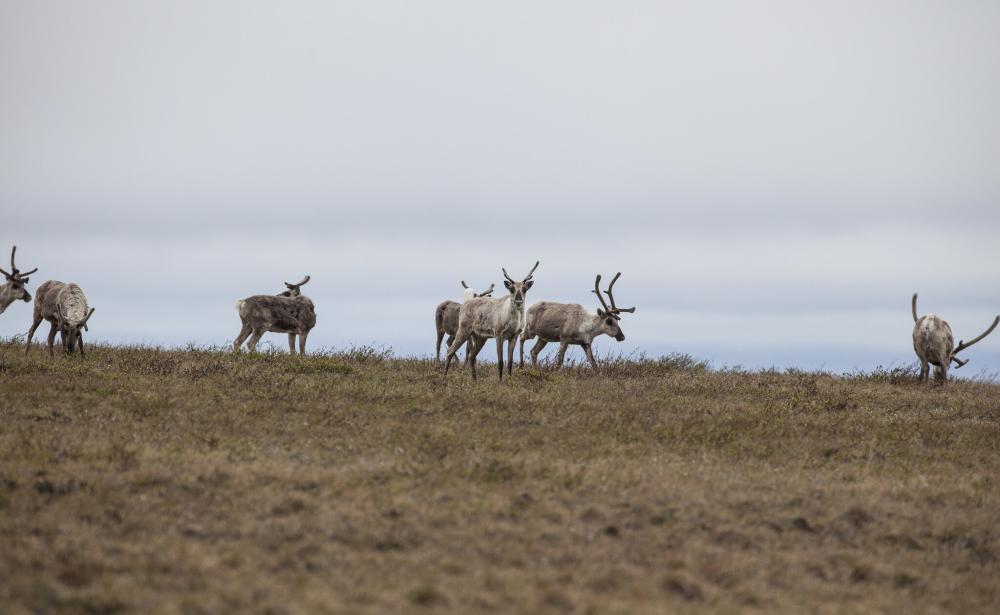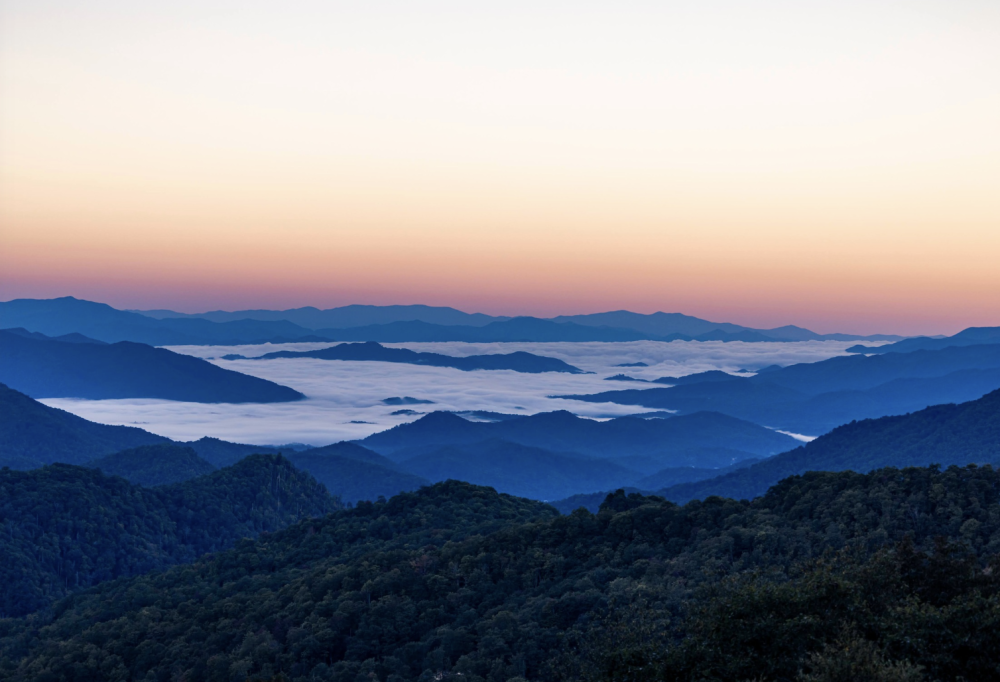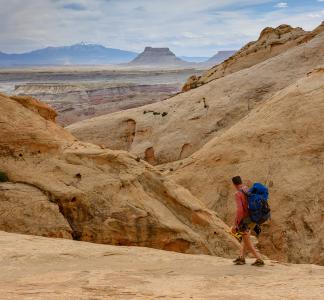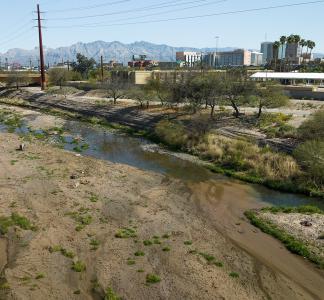10 conservation and public lands victories from 2024

Hiker overlooking Utukok River in the Western Arctic.
Kim Mincer, BLM
From expanded wildlife refuges to stronger protections for public lands, 2024 brought groundbreaking conservation wins
We are still processing the recent elections and the coming challenges to protections of our air, land, water and wildlife. But while we prepare for the year ahead, let's not lose sight of the major victories we secured in 2024. From landmark rules that make polluters pay their fair share to the expansion of national monuments, 2024 brought us solid wins worth celebrating—many of which position public lands as a vital part of the solution to the climate crisis.
We want to thank you, our supporters and partners —many of the following wins would’ve been impossible without your tireless efforts. These victories are the foundation we must build on, even as we face an uncertain future.

TWS
A new era for public lands: Conservation on equal ground with extraction
The Bureau of Land Management’s (BLM) Public Lands Rule, announced in April, marks a monumental and much-needed shift in how the agency manages its vast 245-million-acre estate. Historically, drilling and mining often took precedence on these lands (about 90% of BLM lands are open for oil and gas leasing!), but the rule now ensures that protecting nature, cultural resources and outdoor recreation is an equal priority—just as Congress mandated almost 50 years ago. The rule also gives the nation’s largest land management agency the regulatory framework to prioritize conservation as a tool in the fight against climate change and the loss of nature.

San Rafael Swell Recreation Area, UT
Benj Wadsworth
Boosting solar and wind power while protecting sensitive landscapes
Also in April, the BLM released its Renewable Energy Rule—a step toward accelerating the development of wind and solar projects on public lands, aligning with President Biden’s goal of achieving 100% clean electricity by 2035. By reducing rents and fees for renewable energy projects, the rule better levels the playing field for clean energy, which has long been overshadowed by fossil fuel interests.
This rule and the updated Western Solar Plan will support responsible renewable energy development on public lands while minimizing harm to sensitive areas. That updated Western Solar Plan will guide responsible utility-scale solar development across BLM lands in 11 Western states.

Randy Montoya, Sandia Labs, flickr
Making oil and gas companies clean up after themselves and pay their fair share on public lands
Continuing with the effort to address conservation and climate challenges on public lands, the BLM also released its Oil and Gas Rule. This is the most significant reform to the federal oil and gas leasing program in decades, better aligning oil and gas decisions on public lands with ecosystem and community health needs. It sets stricter standards for oil and gas companies by focusing development away from sensitive places and making companies cover the cleanup costs if they orphaned or abandon their nonproducing wells. It also increases the cost of leasing and developing, an effort that will loosen Big Oil’s decades-long grip on public lands.
Strengthening protections for the Arctic's most vulnerable areas
The Arctic is ground zero for climate change and it's imperative that we protect it from fossil fuel development. In April the BLM released a new rule aimed at ensuring maximum protection of pre-existing Special Areas: Teshekpuk Lake, Colville River, Utukok River Uplands, Peard Bay and Kasegaluk Lagoon. These areas, which comprise 13 million acres, hold immense significance for Indigenous communities and are important habitats for wildlife and fish. Those protections could also be expanded by connecting the Teshekpuk Lake Special Area with the Colville River Special Area—securing essential migration corridors, calving grounds and habitat for caribou.
The administration also blocked the construction of the controversial 211-mile Ambler Road which would have threatened the Brooks Range, Gates of the Arctic National Park and vital subsistence resources for Indigenous communities. And it restored protections of 28 million acres of land—known as D-1 lands—harboring some of the largest and most intact landscapes remaining in the nation. Former President Trump attempted to lift protections on those lands, which range from just above Glacier Bay National Park in the Southeast to Bristol Bay in the Southwest and north to the Chukchi Sea.

Teshekpuk Caribou in the Western Arctic.
Bob Wick (BLM)
Giving communities a stronger voice in environmental decisions
The Biden administration modernized and strengthened the National Environmental Policy Act (NEPA), ensuring our voices will be heard in environmental decisions. For 50 years, NEPA has required the government to consider how a project will affect the environment and local communities and has given the people a chance to weigh in. The NEPA Phase 2 Rule gives more communities a seat at the table during the environmental review process and affirms the responsibility of federal agencies to consider climate change impacts in decision-making. It will also restore regulations gutted by the previous administration.
National monuments expanded and created to protect landscapes and honor history
In May, President Biden delivered on promises to uphold Tribal voices and expand outdoor access in California with the expansions of San Gabriel Mountains National Monument and Berryessa Snow Mountain National Monument. Together, these expansions protect nearly 120,000 acres of rich landscapes—ensuring Californians’ access to nature, protecting important cultural landscapes and preserving critical wildlife habitat.
Later in August, the president designated the Springfield 1908 Race Riot National Monument in Illinois. The site commemorates a tragic event 116 years ago, when a racist mob razed the homes and businesses of Black residents, killing two men. This event served as a catalyst that eventually led to the creation of the National Association for the Advancement of Colored People (NAACP).
And in December, President Biden officially designated the Carlisle Federal Indian Boarding School National Monument in Carlisle, Pennsylvania—acknowledging the painful and traumatic legacy of the Indian boarding school era and honoring the resilience of Indigenous communities and Tribal Nations.

San Gabriel Mountains, CA
Michael Gordon
Protecting treasured landscapes from drilling and mining
Significant progress has been made in safeguarding treasured landscapes from drilling and mining, with several key victories highlighting this momentum. Earlier this year the Biden administration banned new oil and gas development on the Thompson Divide along Colorado’s Western Slope, protecting about 225,000 acres of public lands for the next 20 years. Later in the year, the BLM ended coal leasing in the Powder River Basin—the largest coal-producing region in the US—keeping nearly 6 billion tons of coal in the ground and ensuring unique ecosystems are preserved. And in Wyoming, the Rock Springs Resource Management Plan (RMP) will ultimately guide forward-thinking management for nearly 3.6 million acres of public land for the next two decades.

Thompson Divide, CO
Ecoflight
Restoring Indigenous names and histories on public lands
In September, the U.S. Board of Geographic Names unanimously voted in favor of the Eastern Band of Cherokee application to officially restore the name of Clingmans Dome to “Kuwohi,” its ancestral name, which means “mulberry place" in the Cherokee language. This achievement was supported by a strong coalition of people and organizations across western North Carolina and eastern Tennessee, with the Coalition for Outdoor Renaming & Education (CORE) playing a crucial role in this effort. There is still much more to be done under the movement to reclaim Indigenous names and histories on public lands across the United States.

Highest peak in the Smoky Mountains has ancestral name, Kuwohi, restored.
Micheli Oliver
Big steps to make the outdoors more accessible for all
Outdoor recreation took a big step forward this year with passage of the EXPLORE (Expanding Public Lands Outdoor Recreation Experiences) Act. This bipartisan recreation package will improve access to the outdoors for youth, families, people with disabilities, veterans, active-duty service members and people who live in nature-deprived areas.
This year also saw new Outdoor Recreation Legacy Partnership Program (ORLP) grants, including the largest investment in the program’s history. The National Park Service received $254.68 million to invest in 54 projects across 24 states for new and revitalized local parks. This was also the first time a Tribal Nation was awarded an ORLP grant, with the Turtle Mountain Band of the Chippewa in North Dakota getting $1 million for picnic and playground area improvements.
Expanding the National Refuge System to protect vulnerable wildlife
The Department of the Interior expanded four existing national wildlife refuges, expanding up to 1.13 million acres of wildlife habitat in New Mexico, North Carolina and Texas. Those refuges are: Roanoke River National Wildlife Refuge (NC), Aransas and Big Boggy National Wildlife Refuges (TX) and Muleshoe National Wildlife Refuge (NM and TX).
The department also announced the creation of a new Willamette Valley Conservation Area in Oregon, securing imperiled oak and prairie habitat for threatened species like dusky geese. This move adds 600 acres to the National Refuge System.

White pelicans at Willamette Valley Conservation Area in Oregon.
Chris Quinn



